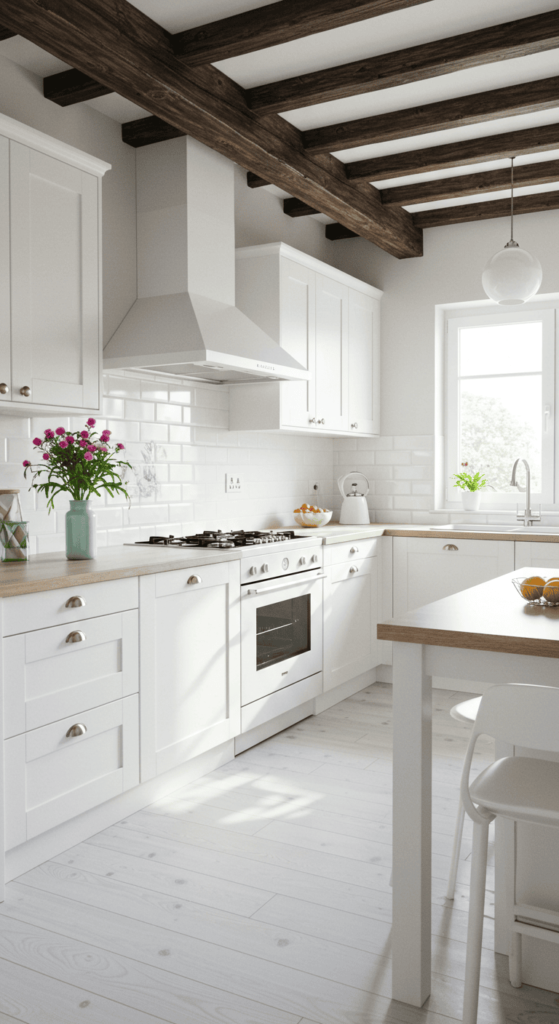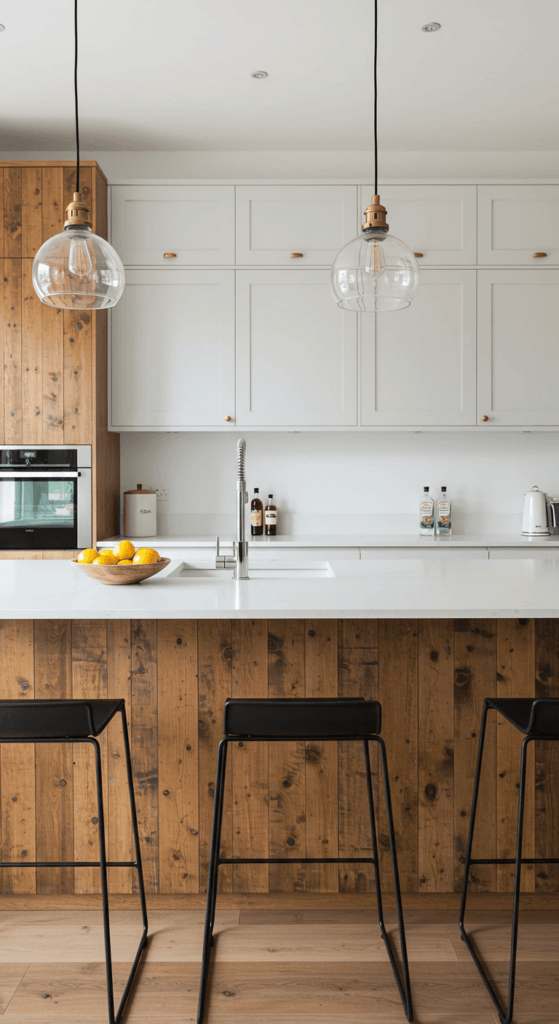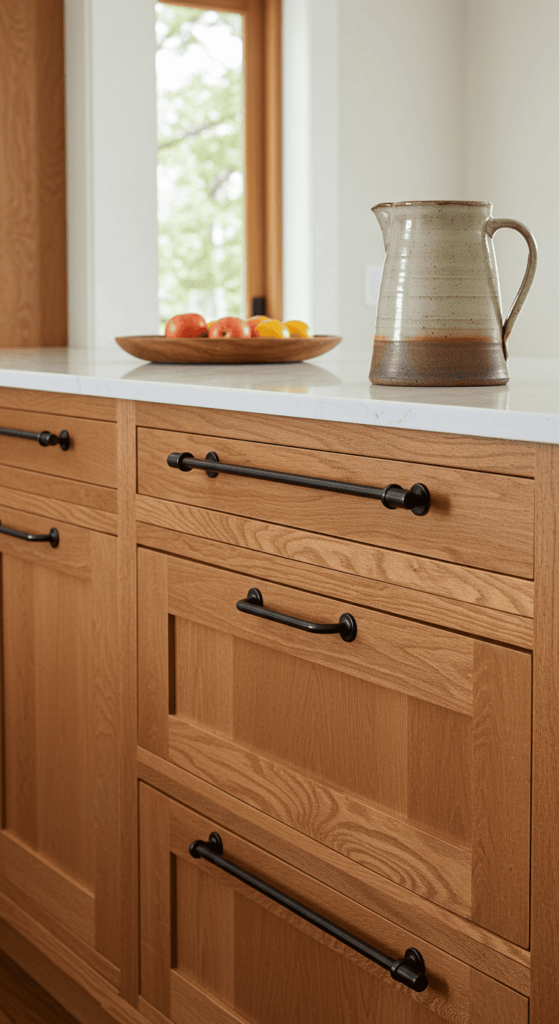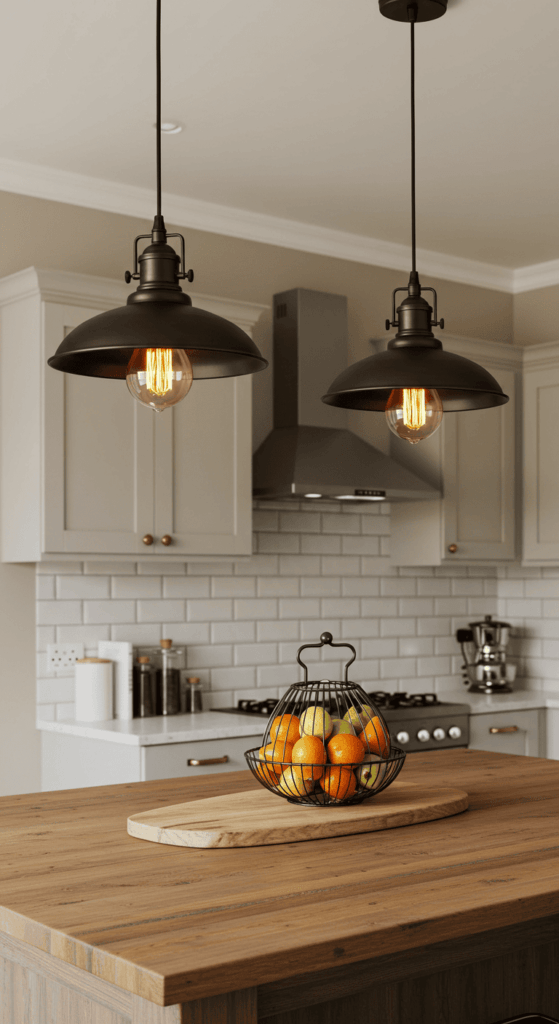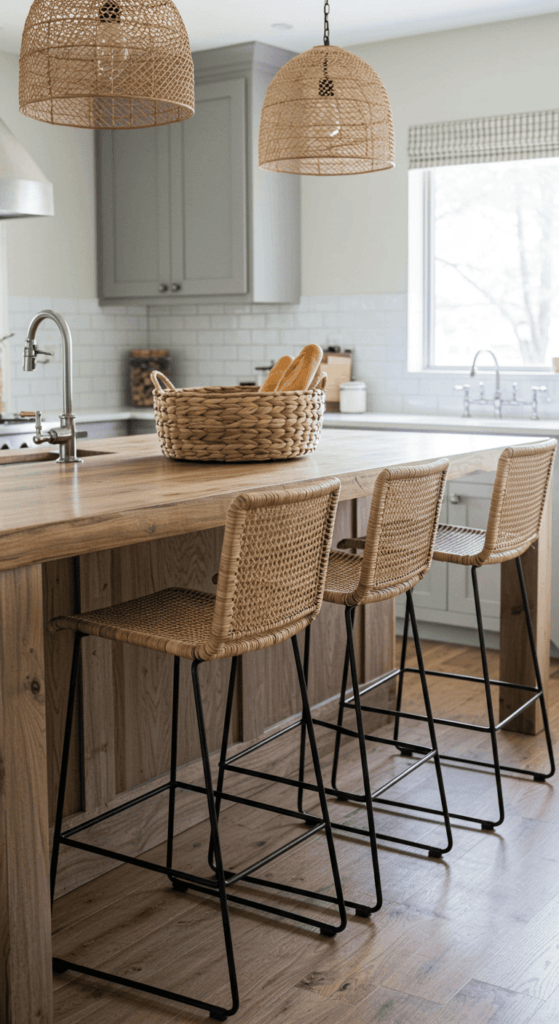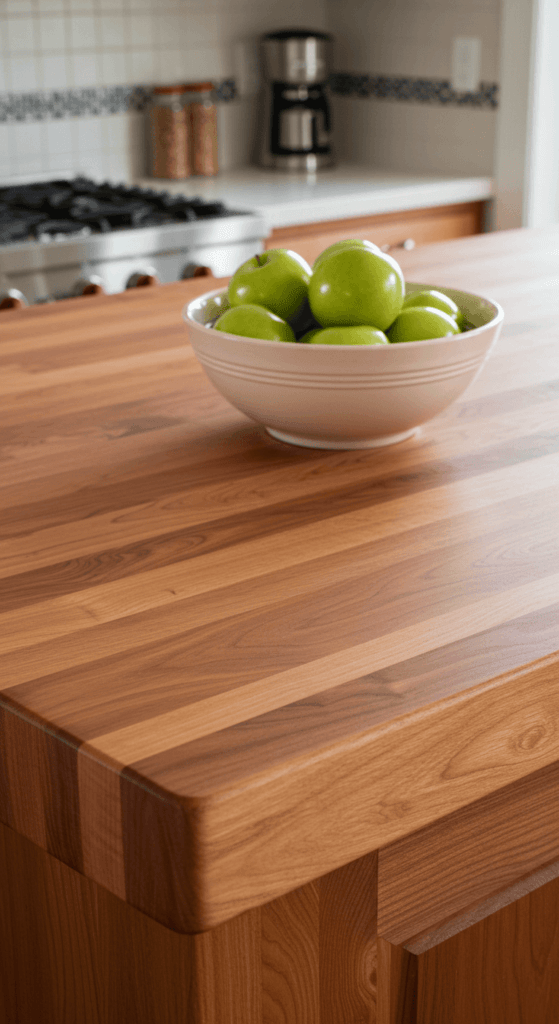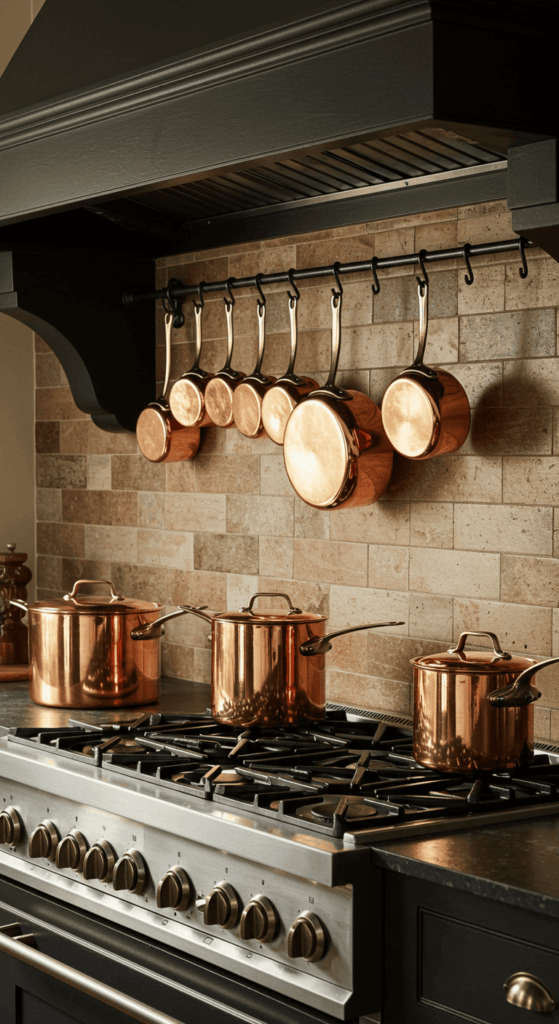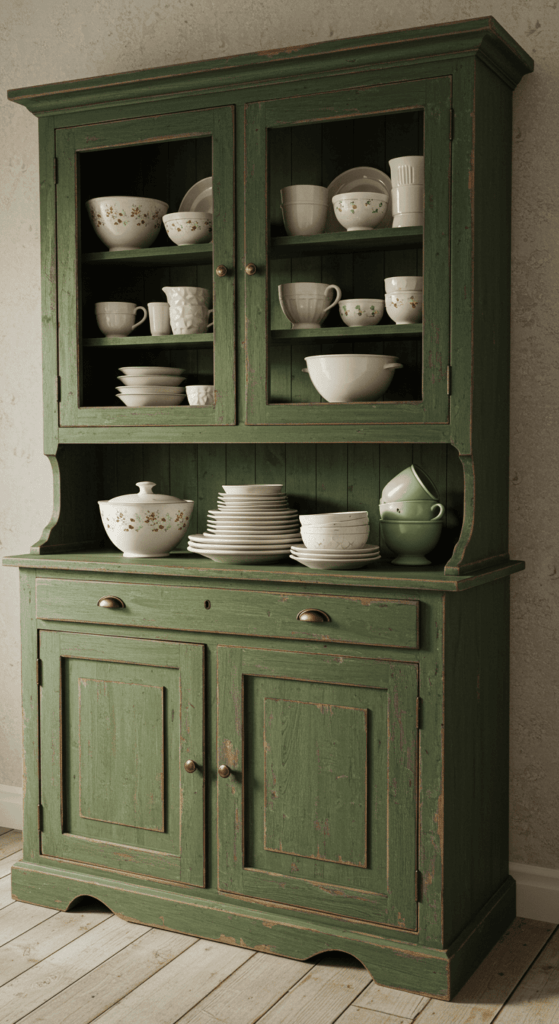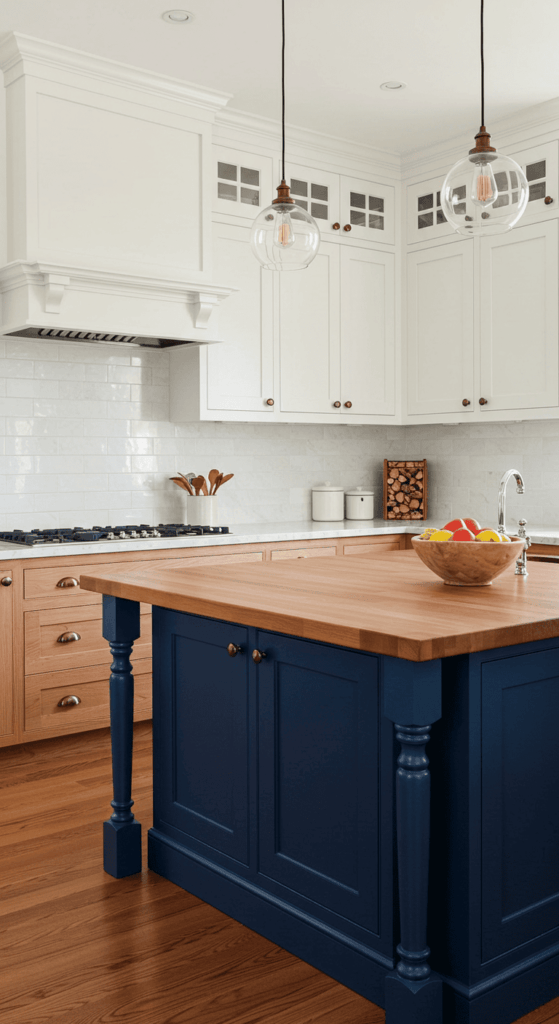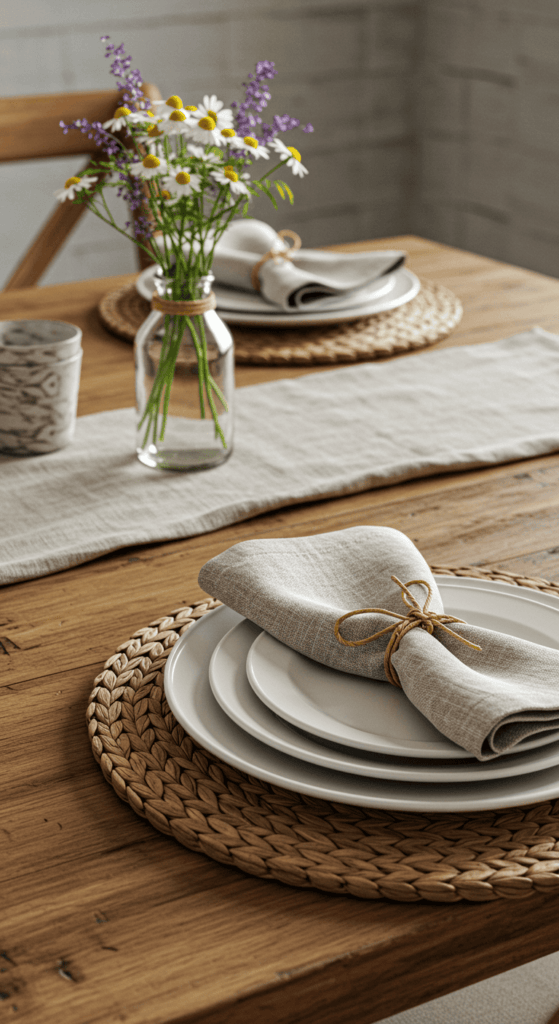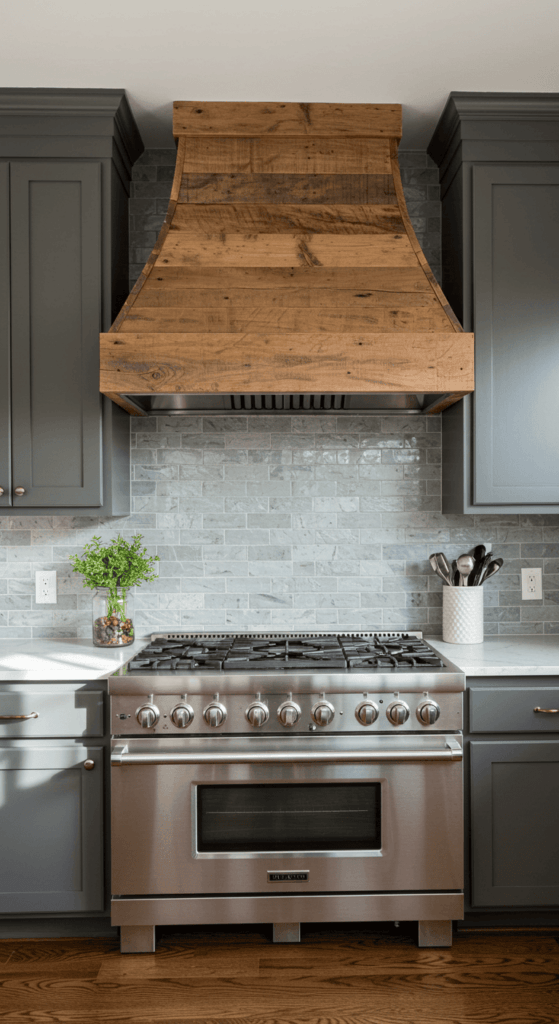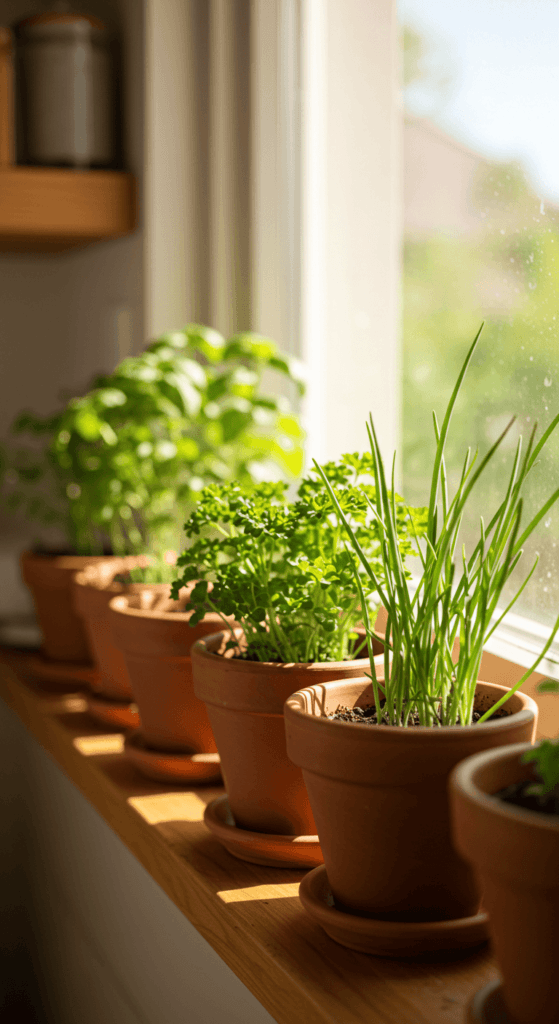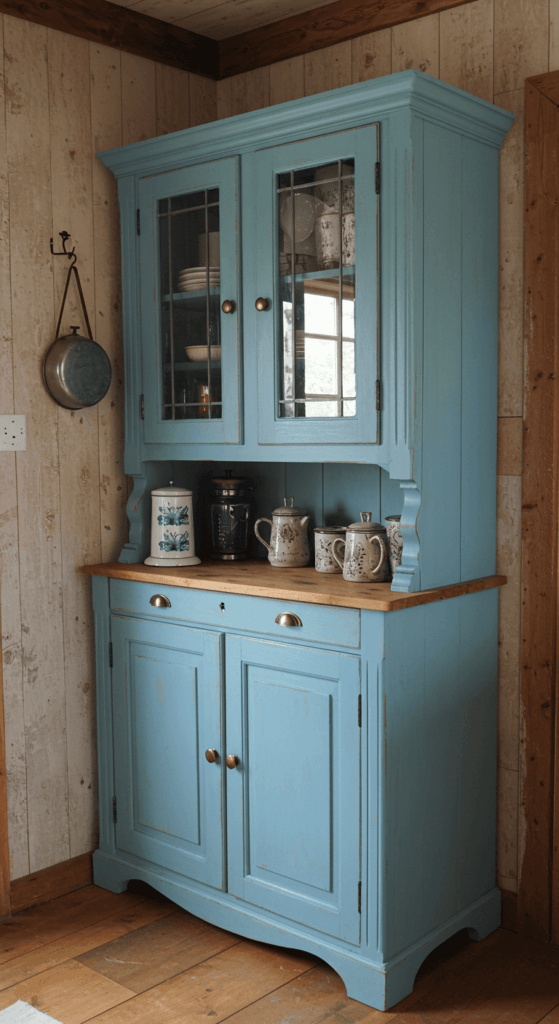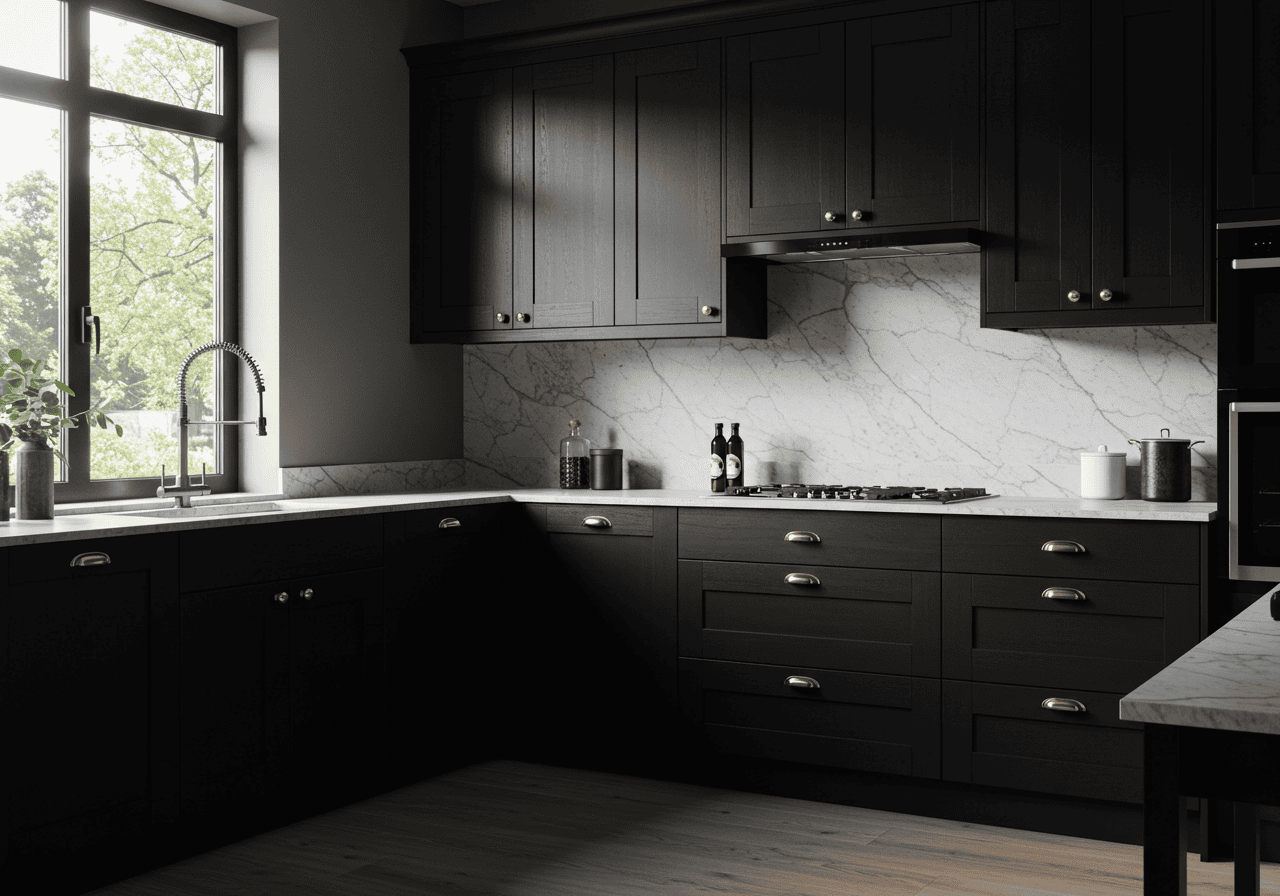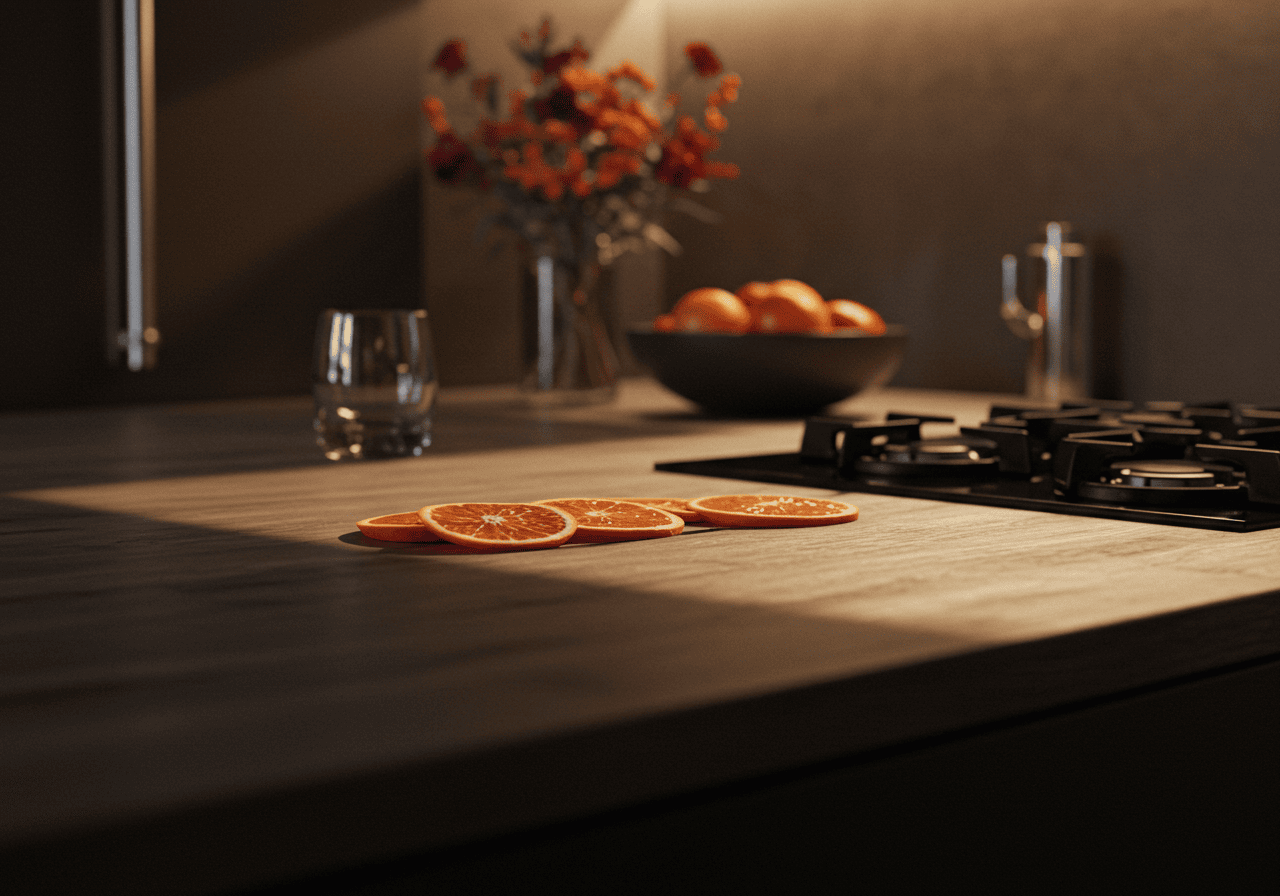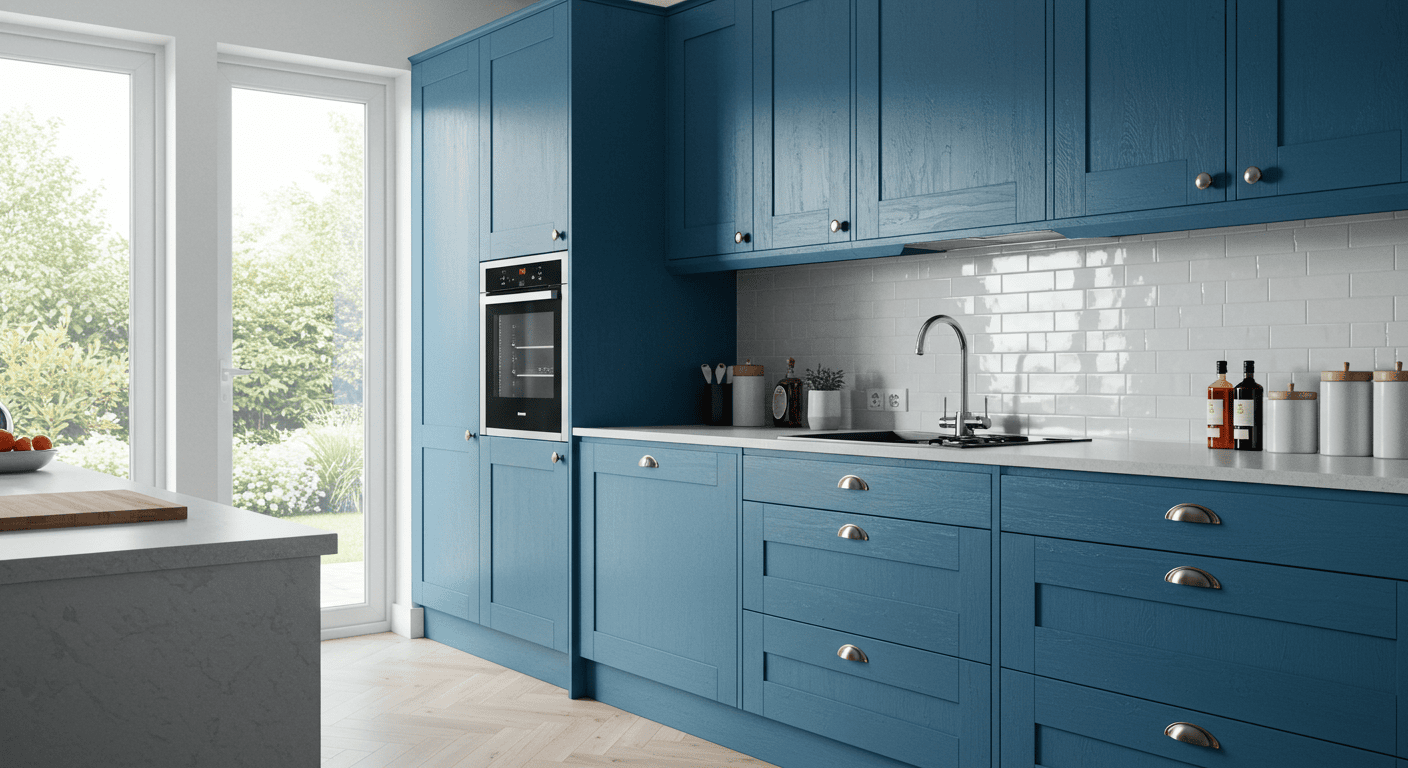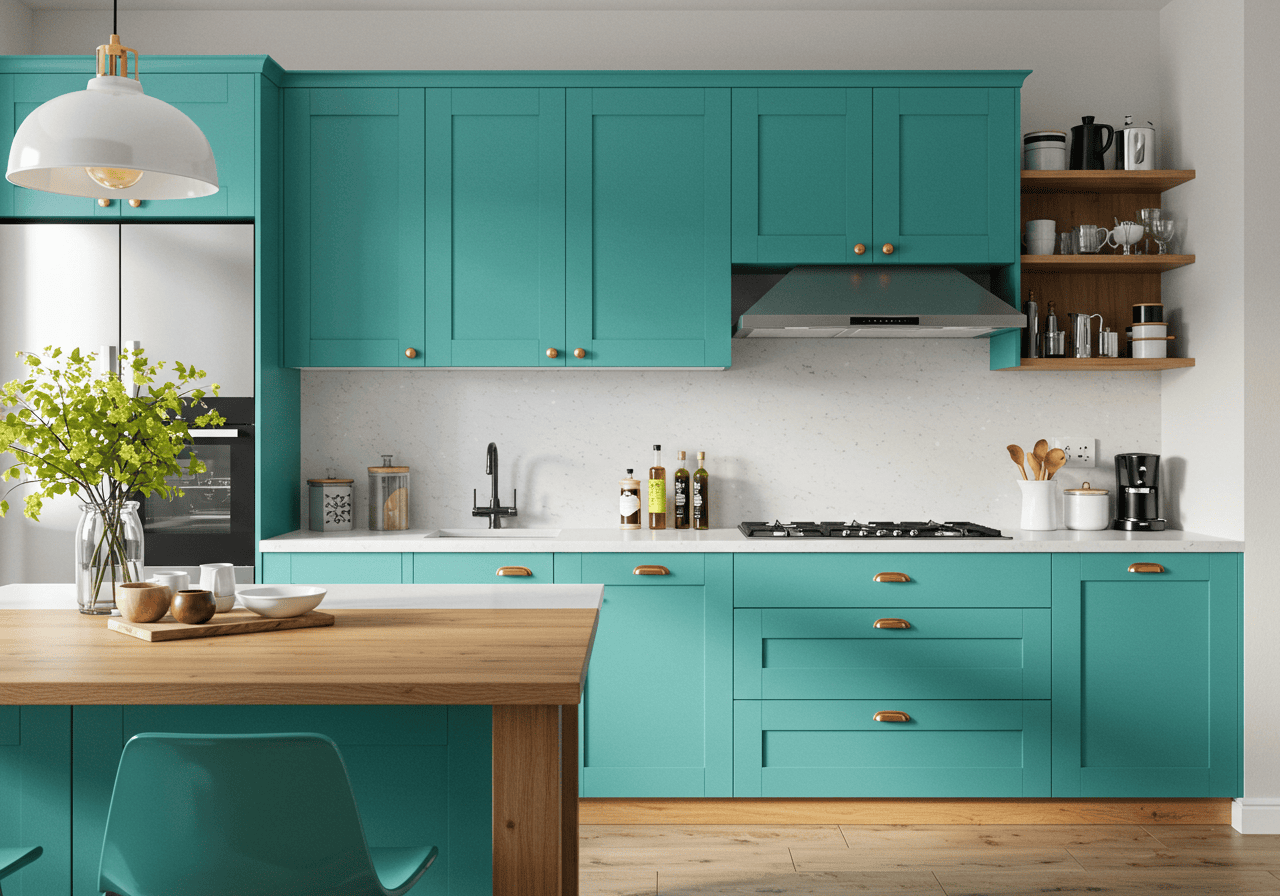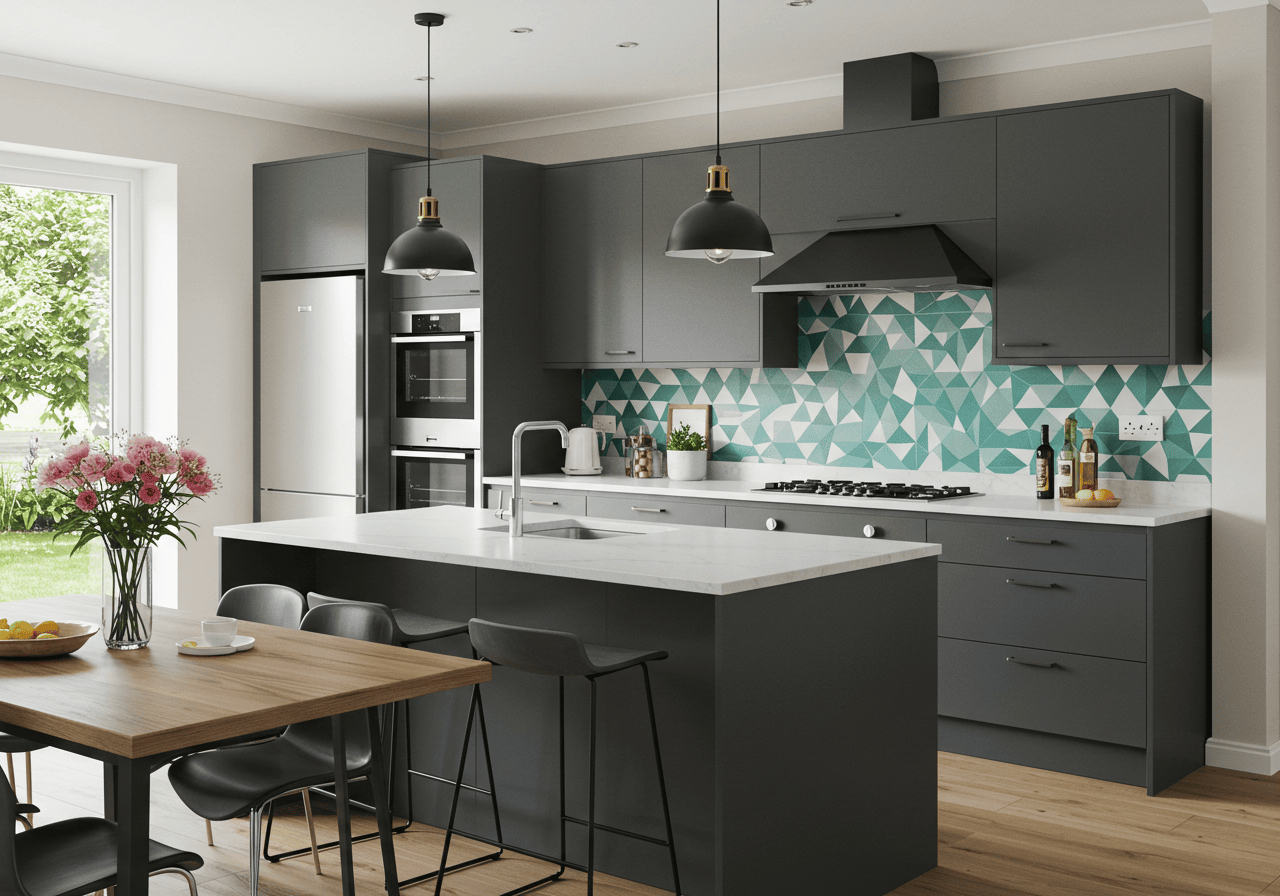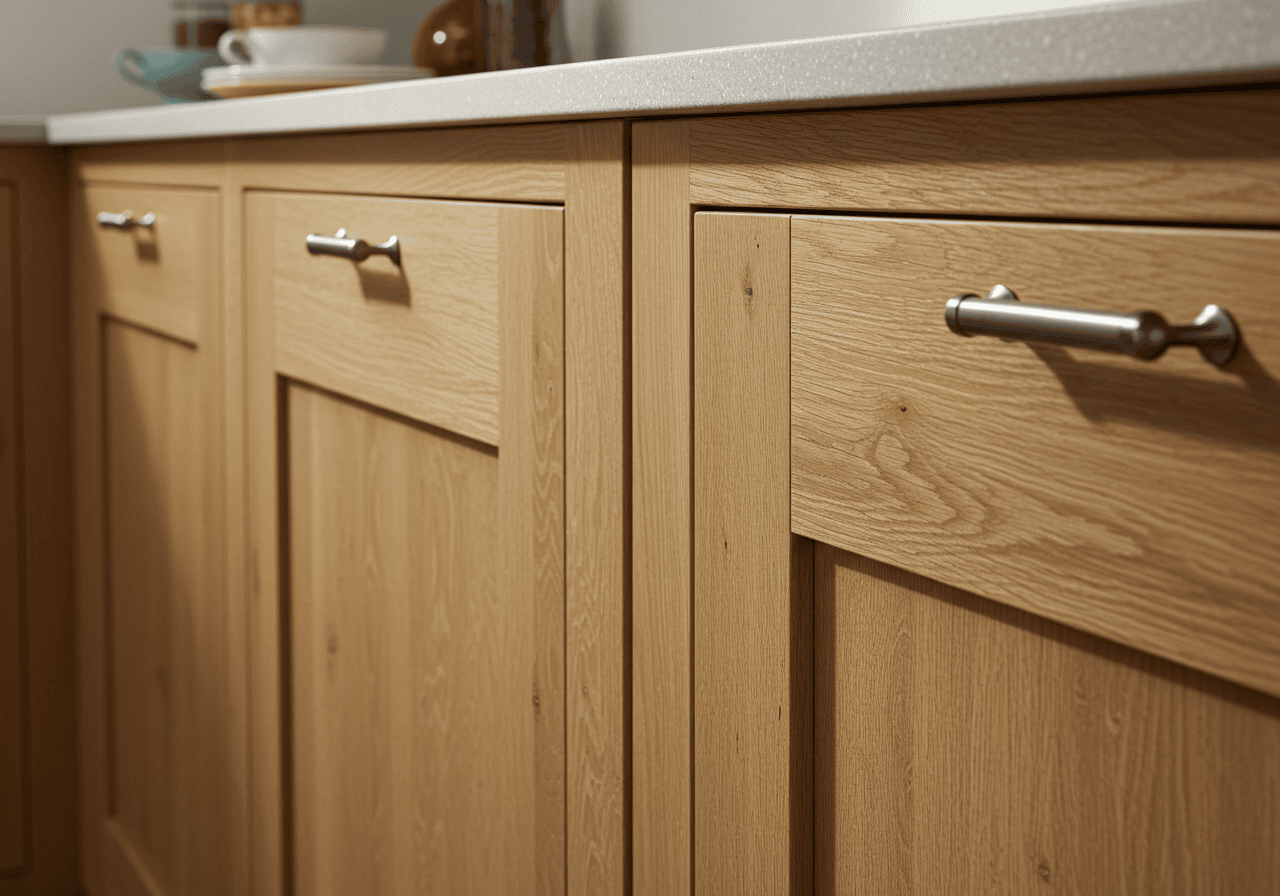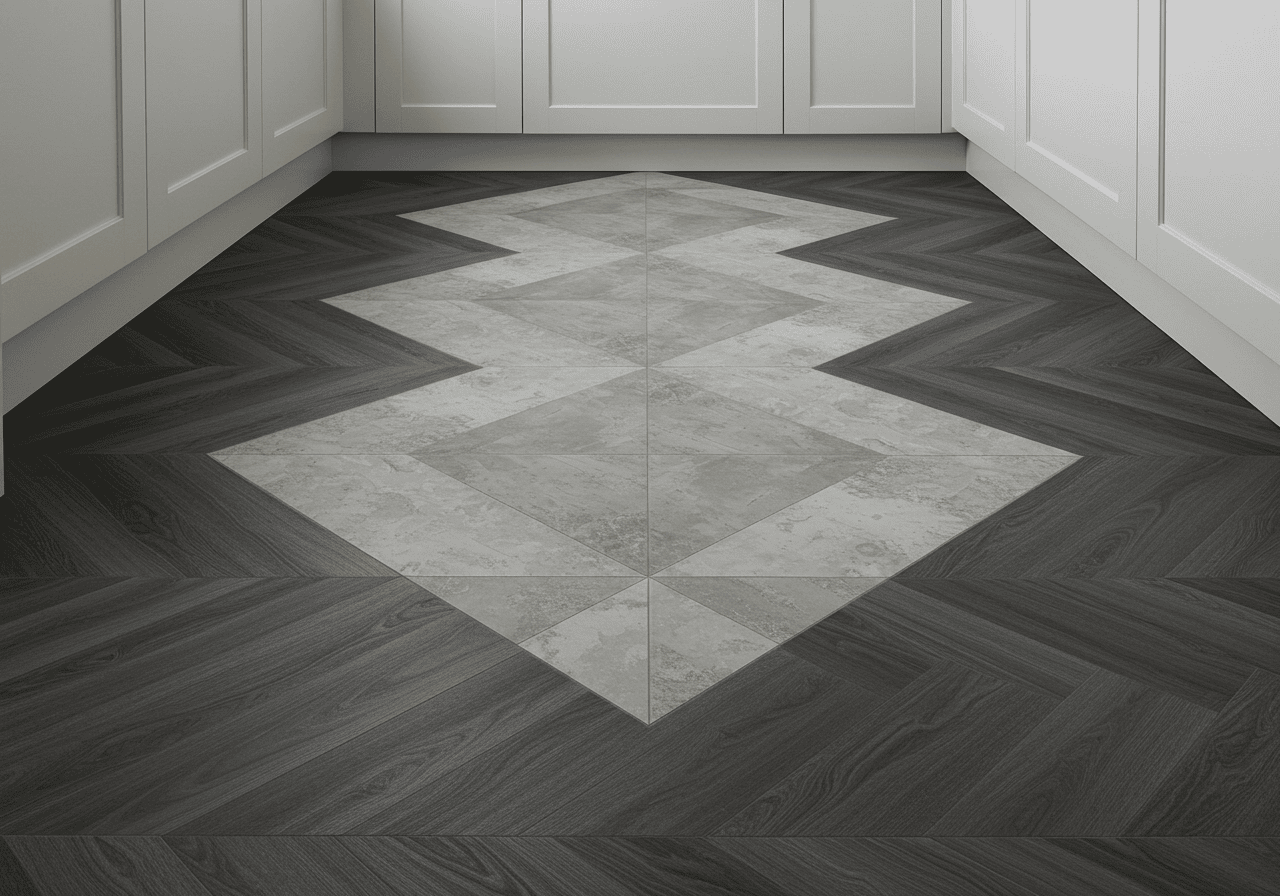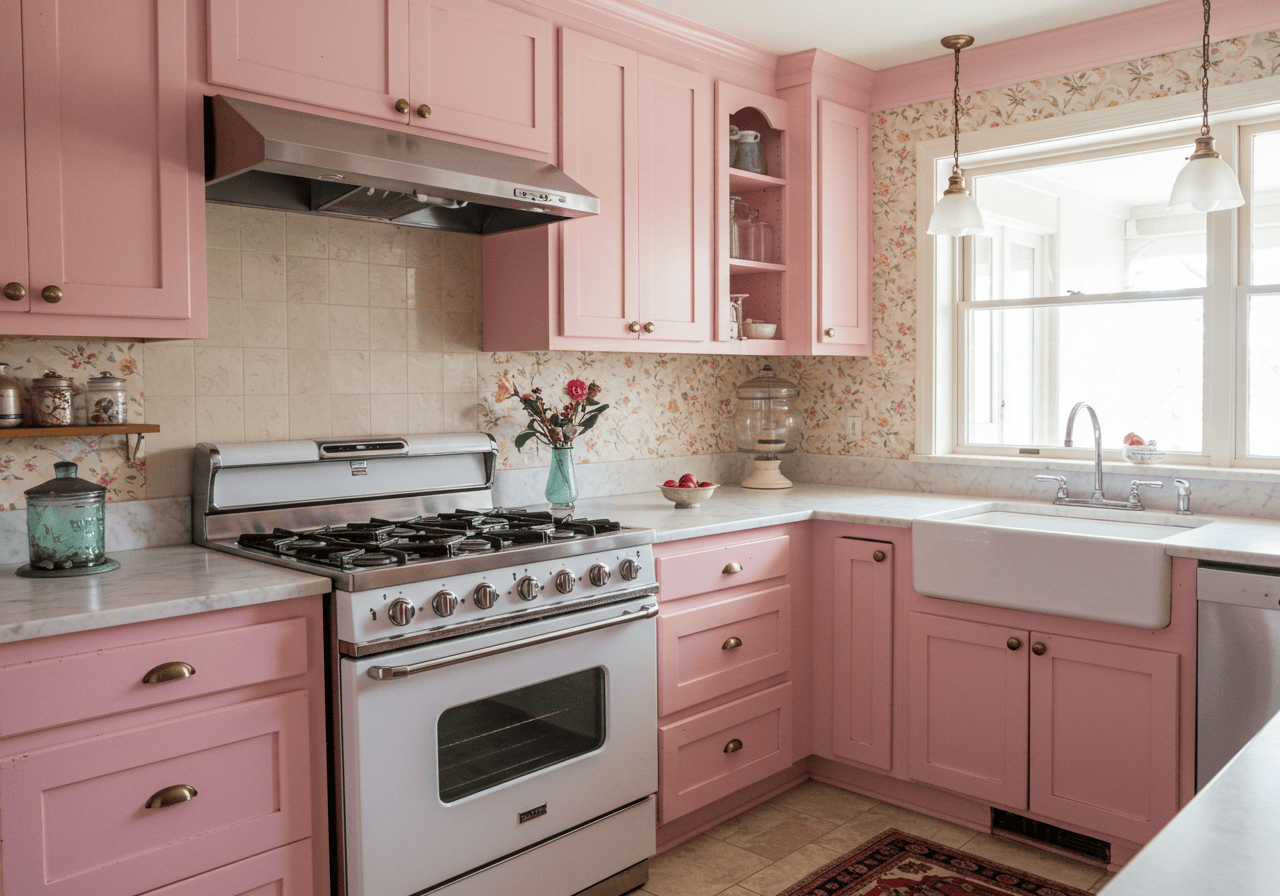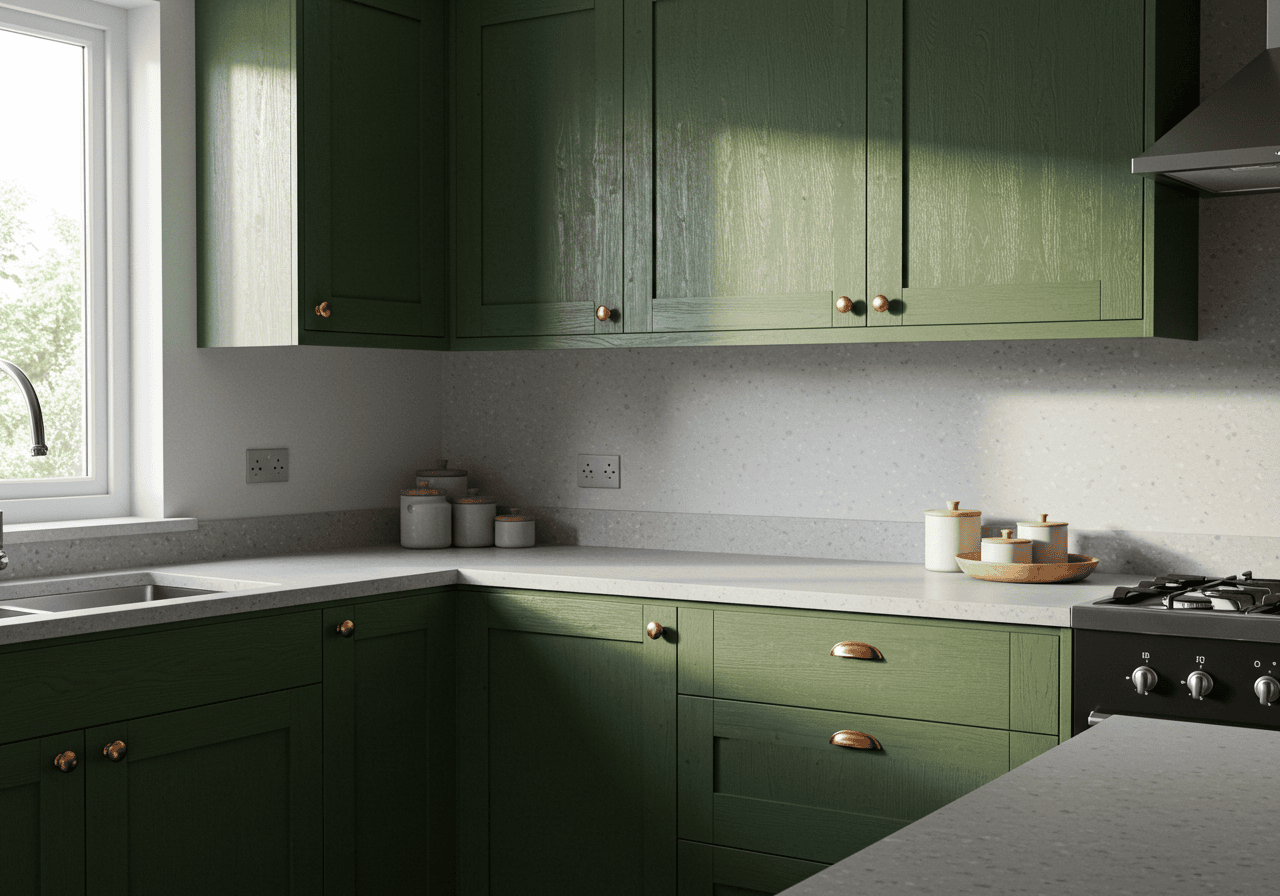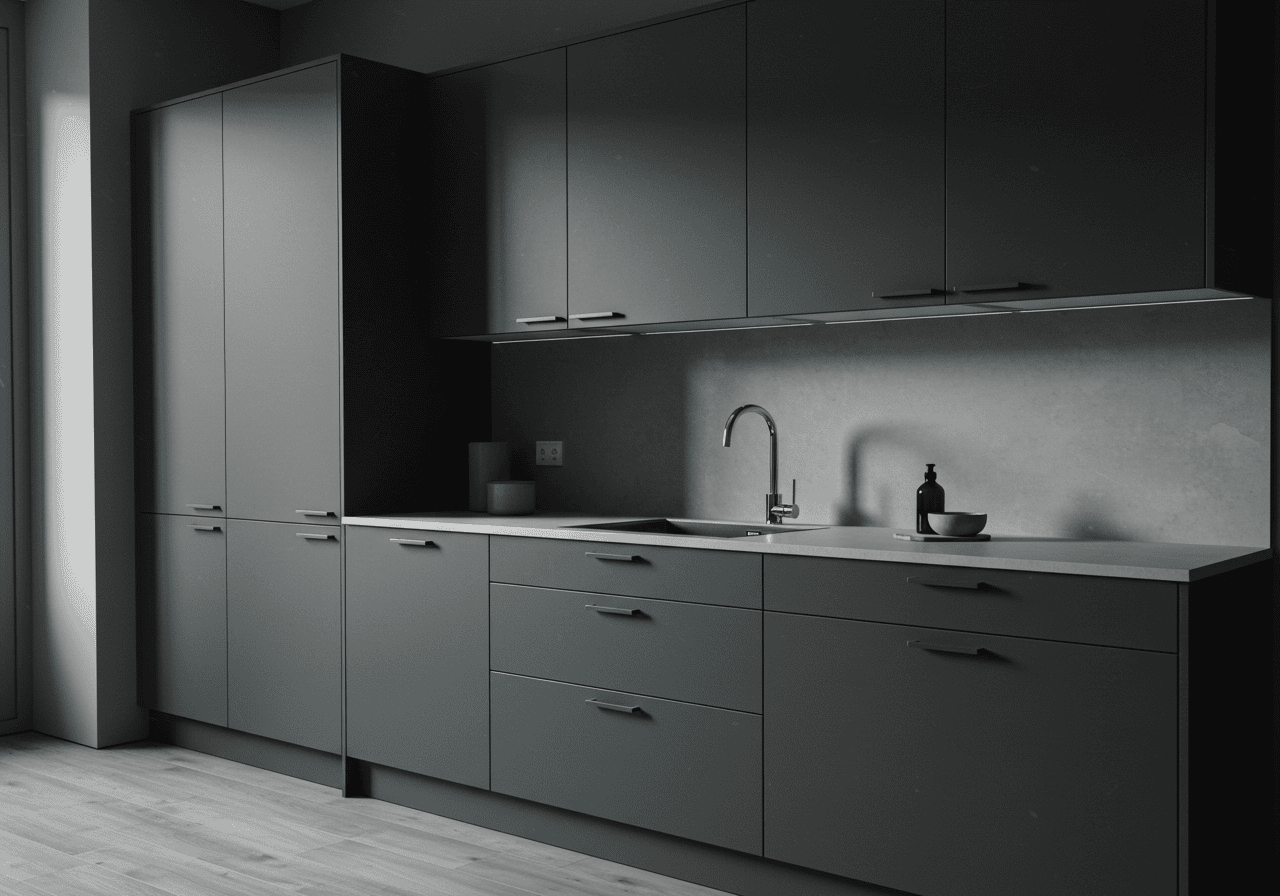Ever dream of a kitchen that feels like a warm hug? A space that blends the sturdy charm of the countryside with the comforts of modern living? That’s the magic of a rustic kitchen. Forget cold, minimalist spaces; we’re talking about textures you want to touch, materials that tell a story, and an atmosphere that invites everyone to gather ’round.
Rustic design celebrates the beauty of the natural, the weathered, and the handcrafted. It’s about embracing imperfections, showcasing raw materials like wood and stone, and creating a sense of history and warmth. Whether you live in a sprawling farmhouse or a chic city apartment, incorporating rustic elements can instantly make your kitchen feel more inviting and soulful.
Ready to sprinkle some cozy charm into the heart of your home? Let’s dive into 21 inspiring rustic kitchen ideas that are brimming with character and style!
1. Embrace the Drama of Exposed Wood Beams
Nothing screams rustic charm quite like exposed wooden beams overhead. They instantly add architectural interest, draw the eye upward, and infuse the space with a sense of history and grounding warmth.
- Why it works: Beams provide a strong visual anchor and introduce a significant natural element. Whether they’re original to the house or added for effect (even high-quality faux beams work wonders!), they define the rustic aesthetic.
- Get the look: Consider rough-hewn, dark-stained beams for a traditional farmhouse feel, or lighter, smoother wood for a more modern rustic or coastal vibe. Contrast them against white or light-colored ceilings for maximum impact.
- Expert Tip: Ensure the scale of the beams matches the height and size of your kitchen. Overly large beams can overwhelm a small space.
2. Introduce Earthy Natural Stone Accents
Bring the rugged beauty of the outdoors in with natural stone. Whether used for a backsplash, a feature wall around the stove, or even flooring, stone adds unparalleled texture, color variation, and an organic, earthy feel.
- Why it works: Stone connects the kitchen directly to nature. Its inherent variations mean no two installations are exactly alike, adding unique character. Materials like fieldstone, slate, travertine, or even brick veneer lend durability and timeless appeal.
- Get the look: A stacked stone backsplash behind the range creates a stunning focal point. Consider flagstone or slate tiles for flooring that’s both beautiful and hardwearing. Even a stone-clad range hood can make a statement.
- Keep in Mind: Natural stone can be porous. Ensure it’s properly sealed, especially for backsplash and countertop areas, to protect against stains and moisture.
3. Opt for Character-Rich Reclaimed Wood
Give your kitchen cabinets, island, or shelving a story to tell by using reclaimed wood. Sourced from old barns, factories, or warehouses, this timber is prized for its unique patina, nail holes, knots, and weathered look – imperfections that translate into pure character.
- Why it works: Reclaimed wood is sustainable and adds instant history and warmth. Its distinct grain patterns and aged appearance are impossible to replicate with new materials, making your kitchen truly one-of-a-kind.
- Get the look: Use reclaimed wood planks for cabinet fronts, a waterfall edge on an island, or chunky floating shelves. You can leave it naturally weathered, apply a light stain, or even paint it while allowing some texture to show through. Explore various kitchen cabinet color ideas that complement the wood’s natural tones.
- Pairing Tip: Combine reclaimed wood with sleeker elements like smooth countertops or modern hardware for a balanced “modern rustic” look.
4. Install an Iconic Apron-Front Sink
The apron-front sink, often called a farmhouse sink, is a quintessential element of rustic kitchen design. Its deep basin and exposed front panel make a charming and practical statement.
- Why it works: This style of sink evokes a sense of tradition and utility. It’s visually distinct and provides ample space for washing large pots and pans – perfect for a hardworking kitchen.
- Get the look: Classic white fireclay is the most popular choice, offering durability and timeless appeal. However, apron-front sinks also come in stainless steel, copper, or even carved stone for different takes on the rustic theme.
- Installation Note: These sinks typically require a specific base cabinet designed to accommodate the exposed front. Plan accordingly during your kitchen design or renovation.
5. Display Treasures on Open Shelving
Swap out some upper cabinets for open shelving, especially shelves made from thick slabs of wood or reclaimed timber. This opens up the space visually and provides the perfect stage for your favorite dishware, vintage finds, and everyday essentials.
- Why it works: Open shelving adds a casual, lived-in feel characteristic of rustic style. It breaks up the monotony of solid cabinetry and is a perfect opportunity to inject personality – this is one of our favorite simple kitchen decorating ideas!
- Get the look: Use sturdy wooden shelves supported by decorative metal brackets (like wrought iron) or opt for a floating shelf design for a cleaner look. Display items like stoneware plates, mason jars filled with dry goods, copper mugs, and small plants.
- Curate, Don’t Clutter: The key to successful open shelving is careful curation. Group items by color or function, and avoid overcrowding the shelves to maintain a sense of order and style.
6. Choose Warm, Natural Wood Cabinetry
While painted cabinets have their place, natural wood cabinetry is the heart and soul of many rustic kitchens. The inherent grain, knots, and warm tones of wood create an immediate sense of welcome and connection to nature.
- Why it works: Wood is durable, timeless, and offers incredible texture. Species like knotty pine, alder, hickory, or oak naturally lend themselves to a rustic aesthetic with their visible grain patterns and imperfections.
- Get the look: Opt for cabinet door styles with simple, sturdy construction, like Shaker or flat-panel doors. Finishes can range from light, natural stains that showcase the wood’s beauty to slightly darker tones for a cozier feel. Consider leaving the wood unstained but sealed for a very organic look.
- Hardware Matters: Pair wood cabinets with substantial hardware in finishes like oil-rubbed bronze, antique brass, or wrought iron to enhance the rustic vibe.
7. Incorporate Vintage-Inspired Lighting Fixtures
The right lighting can make or break the ambiance. In a rustic kitchen, lean towards vintage-inspired or industrial-style lighting fixtures that feel authentic and add character. Think beyond basic recessed lighting!
- Why it works: Fixtures with aged metal finishes, exposed bulbs, or designs reminiscent of old factories or barns complement the raw materials and handcrafted feel of a rustic space. They provide functional light while acting as key decorative elements. Explore various kitchen lighting ideas to find the perfect fit.
- Get the look: Consider pendant lights with metal shades (copper, bronze, or galvanized steel) over the island, a wrought-iron chandelier over the dining area, or cage lights for a touch of industrial flair. Sconces with gooseneck arms also fit beautifully. Edison bulbs enhance the vintage appeal.
- Layer Your Lighting: Combine overhead ambient lighting with task lighting (like pendants over the island) and accent lighting (like sconces) for a functional and inviting atmosphere.
8. Add Texture with Shiplap or Beadboard Walls
Introduce subtle texture and farmhouse charm with shiplap or beadboard paneling. Used as an accent wall, backsplash, or even on the ceiling, these wood treatments add visual interest without overwhelming the space.
- Why it works: The clean lines of shiplap (horizontal boards) or the charming grooves of beadboard (vertical panels) provide a textural backdrop that complements rustic elements. They feel classic, cozy, and distinctly country-inspired.
- Get the look: Install shiplap horizontally for a more modern farmhouse feel, often painted white or a soft neutral. Beadboard works well vertically, perhaps as wainscoting or a backsplash, and looks great painted or stained. You can even use it on the back of an island or peninsula.
- Color Choices: While white is classic, don’t shy away from muted colors. Soft gray kitchen cabinets pair beautifully with white shiplap, or consider a muted green or blue beadboard for a subtle pop of color.
9. Warm Up with Woven Textures
Incorporate woven elements like baskets, rugs, and seating to add softness and another layer of natural texture to your rustic kitchen. These pieces counteract the hardness of wood and stone, making the space feel cozier.
- Why it works: Natural fibers like rattan, wicker, jute, and seagrass bring an organic, handcrafted quality. They add warmth, visual interest, and practical storage or comfort.
- Get the look: Use woven baskets on open shelves or under a console table for storing linens, produce, or odds and ends. Place a durable jute or woven wool rug under the kitchen table or in front of the sink. Consider bar stools or dining chairs with woven seats or backs.
- Durability Check: For high-traffic kitchen areas like rugs, choose tightly woven, durable materials like jute or indoor/outdoor woven options that are easier to clean.
10. Consider Deep, Moody Cabinet Colors
While natural wood is classic, painted cabinets can also work beautifully in a rustic kitchen, especially when you choose deep, moody, or nature-inspired colors. Think beyond white for a unique and cozy statement.
- Why it works: Darker or richer colors can ground the space, add sophistication, and create a cozy, enveloping feel, especially when paired with warm wood accents and natural stone. They contrast beautifully with lighter countertops and backsplashes.
- Get the look: Deep forest greens, stormy blues, charcoal grays, or even sophisticated black kitchen cabinets can create a stunning rustic look. Consider pairing these with butcher block countertops or brass hardware for warmth. Even a rich, earthy terracotta or a deep barn red can work wonders. Exploring different palettes, like the serene options for blue kitchen cabinets, can offer surprising rustic charm.
- Balance is Key: If you opt for dark cabinets, ensure you have enough natural light or ample artificial lighting to prevent the space from feeling too heavy. Lighter countertops, backsplashes, and flooring can provide necessary balance.
11. Install Warm Butcher Block Countertops
For a truly classic rustic touch, nothing beats the warmth and functionality of butcher block countertops. This hardworking surface adds a significant dose of natural wood texture and develops a beautiful patina over time.
- Why it works: Butcher block instantly warms up a kitchen, providing a pleasing contrast to stone, tile, or painted cabinetry. It feels solid, traditional, and inherently welcoming, evoking images of cozy farmhouse kitchens.
- Get the look: Maple, oak, walnut, and cherry are popular wood choices, each offering different colors and grain patterns. You can use butcher block for all your countertops or just feature it on an island for a focal point. Regular oiling is needed to maintain its beauty and protect the wood.
- Practical Edge: While beautiful, wood requires more maintenance than stone. It can be susceptible to scratches and water damage if not properly sealed and cared for. However, minor scratches can often be sanded out!
12. Incorporate Gleaming Copper Accents
Add a touch of warmth, shine, and old-world charm with copper accents. Whether it’s cookware, a range hood, a sink, or hardware, copper develops a unique patina over time that enhances the rustic aesthetic.
- Why it works: Copper’s warm, reddish-orange hue pairs beautifully with wood tones, natural stone, and both light and dark cabinet colors. It feels both luxurious and grounded, adding a metallic element that feels handcrafted rather than industrial.
- Get the look: Hang a collection of copper pots and pans from a ceiling rack or wall rail. Install a statement copper range hood or an eye-catching copper apron-front sink. Even small touches like copper cabinet pulls or a copper tea kettle can make a difference.
- Patina Power: Decide if you prefer shiny, polished copper or the rich, varied tones of aged copper patina. Both looks work well in a rustic setting, offering different moods.
13. Add Function and Style with a Sliding Barn Door
Make a bold rustic statement and save space with a sliding barn door. Perfect for pantries, laundry rooms adjoining the kitchen, or even as a decorative feature, these doors are both practical and visually impactful.
- Why it works: Barn doors inherently evoke a rustic, farmhouse feel. The exposed hardware and substantial wooden door add texture and architectural interest, becoming a focal point in the room.
- Get the look: Choose a door style that complements your kitchen – from classic Z-brace designs to simpler plank styles. Wood finishes can range from natural or reclaimed to painted. Select hardware (the track and rollers) in finishes like matte black, oil-rubbed bronze, or stainless steel depending on your desired look.
- Space Saver: Remember that sliding doors require clear wall space next to the opening for the door to slide open fully. They are excellent solutions where a traditional swinging door might be awkward.
14. Use Freestanding Furniture Pieces
Move away from solely built-in cabinetry and incorporate freestanding furniture pieces like a hutch, sideboard, or work table. This creates a more collected, unfitted look that feels authentic to traditional rustic and farmhouse styles.
- Why it works: Freestanding pieces add personality and prevent the kitchen from looking too uniform or “cookie-cutter.” They offer flexible storage and display space and contribute to the cozy, lived-in atmosphere.
- Get the look: Hunt for vintage or antique pieces like a Welsh dresser to display china, a sturdy wooden work table to use as an island alternative, or an old sideboard for extra storage. You can leave them in their original finish, paint them, or refinish them to suit your kitchen’s palette.
- Modern Mix: Even in a rustic kitchen, integrating select freestanding pieces can provide a charming contrast, differing slightly from the highly integrated look often seen in sleek modern kitchen ideas.
15. Mix and Match Cabinet Finishes
Create visual interest and depth by mixing and matching cabinet finishes or colors. This technique allows you to highlight certain areas, like the island, and adds a custom, curated feel to your rustic kitchen.
- Why it works: Combining finishes breaks up large expanses of cabinetry, preventing monotony. It allows you to incorporate both painted and wood elements, or different colors, for a layered and dynamic look that still feels cohesive within the rustic theme.
- Get the look: Common combinations include painting the island a different color from the perimeter cabinets (e.g., a blue island with white cabinets, or a black island with wood cabinets). You could also use wood lower cabinets with painted upper cabinets or open shelving.
- Stay Cohesive: While mixing, ensure the chosen finishes and colors complement each other and the overall rustic style. Tying them together with consistent hardware or countertop choices helps maintain harmony.
16. Layer In Cozy Textiles
Don’t underestimate the power of soft textiles to enhance the warmth and comfort of your rustic kitchen. Curtains, tea towels, placemats, and cushions in natural fabrics and simple patterns add softness and personality.
- Why it works: Textiles introduce color, pattern, and texture, counterbalancing the hard surfaces like wood and stone. They contribute significantly to the cozy, lived-in feeling that defines rustic style.
- Get the look: Choose fabrics like linen, cotton, burlap, or even wool. Simple patterns like checks, stripes, or subtle florals work well. Think cafe curtains on the window, patterned tea towels hanging from the oven handle, woven placemats on the table, and perhaps cushions on a bench or window seat.
- Color Palette: Stick to earthy tones, muted colors, or classic farmhouse patterns like gingham or ticking stripes to keep the look cohesive.
17. Pay Attention to Hardware Details
The drawer pulls, cabinet knobs, and faucet might seem like small details, but they have a huge impact on the overall rustic feel of your kitchen. Choosing the right hardware can tie the whole look together.
- Why it works: Hardware is a tactile element you interact with daily. Styles made from materials like wrought iron, cast iron, oil-rubbed bronze, antique brass, or even simple wood knobs add an authentic, handcrafted, or aged feel.
- Get the look: Look for substantial, sturdy hardware with simple designs. Cup pulls, latch-style hardware, simple bar pulls in matte finishes, or classic knobs are all great choices. For faucets, consider bridge faucets or designs with vintage-inspired handles in finishes that match your cabinet hardware.
- Consistency Counts: While you can sometimes mix metals subtly, sticking to one or two complementary hardware finishes throughout the kitchen generally creates a more cohesive and intentionally rustic look.
18. Make the Range Hood a Rustic Feature
Transform a purely functional element into a stunning focal point by creating a custom or statement range hood that embodies rustic style.
- Why it works: The range hood occupies significant visual real estate above the stove. Cladding it in materials like reclaimed wood, shiplap, plaster with a rustic finish, or metal with straps and rivets draws the eye and reinforces the kitchen’s design theme.
- Get the look: Consider a simple, gently sloped hood clad in the same wood as your beams or shelves. Add decorative metal straps or rivets for an industrial touch. A smooth plaster hood painted to match the walls offers a subtler, more European country feel. Even a simple box hood trimmed with a thick piece of reclaimed wood can make an impact.
- Ventilation First: Ensure any decorative cladding doesn’t impede the range hood’s primary function: proper ventilation. Work with professionals if needed to integrate the mechanics correctly.
19. Bring the Outdoors In with Plants and Herbs
Incorporate plenty of greenery with potted plants, fresh herbs, and cut branches or flowers. This simple addition breathes life into the space and reinforces the connection to nature inherent in rustic design.
- Why it works: Plants add organic shapes, fresh color, and vitality. They soften hard lines and contribute to a healthier, more welcoming environment. Plus, having fresh herbs on hand is a kitchen bonus!
- Get the look: Place potted herbs like basil, rosemary, or mint on the windowsill or countertop in terracotta or simple ceramic pots. Hang trailing plants like pothos from a shelf. Display seasonal cut flowers or even simple branches in a rustic pitcher or vase.
- Choose Wisely: Select plants that thrive in the light conditions of your kitchen. Low-maintenance options are often best for busy spaces.
20. Embrace Weathered and Distressed Finishes
Don’t shy away from pieces that show a little age! Intentionally incorporating weathered or distressed finishes on furniture, cabinets, or decorative items adds instant history and character.
- Why it works: Rustic style celebrates imperfection and the beauty of items that have stood the test of time. Distressed finishes mimic natural wear and tear, making pieces feel more authentic and soulful.
- Get the look: Look for vintage furniture with naturally worn paint, or use techniques like milk paint or chalk paint with light sanding on edges to distress newer pieces. Choose picture frames, mirrors, or decorative signs with a weathered look. Even slightly worn spots on butcher block or reclaimed wood contribute to this aesthetic.
- Subtlety is Key: Avoid overdoing the distressed look, which can sometimes feel artificial. Focus on a few key pieces or areas where wear would naturally occur.
21. Blend Rustic Charm with Other Styles
Love rustic but want to keep things fresh? Don’t be afraid to blend rustic elements with other design styles. This creates a unique, personalized space that reflects your taste.
- Why it works: Mixing styles adds depth and prevents your kitchen from feeling like a theme park replica. Combining rustic warmth with cleaner lines or different era influences can result in a sophisticated and inviting space.
- Get the look: Pair rustic wood beams or tables with sleek modern chairs or lighting for a “modern rustic” vibe. Introduce the clean lines and organic shapes found in Mid-Century Modern kitchen design through select furniture or lighting, letting the warmth of rustic wood provide a grounding contrast. Combine farmhouse sinks and shiplap with industrial metal accents.
- Find the Balance: The key is finding the right balance. Let one style dominate slightly, using elements from the other as accents to create harmony rather than chaos. Focus on a cohesive color palette and repeat certain materials or textures to tie the different influences together.
That’s it!
Creating a rustic kitchen is all about embracing warmth, texture, and natural beauty. Whether you incorporate just a few elements or go all-in on the farmhouse charm, these ideas can help you craft a kitchen that feels like the true heart of your home – a welcoming, cozy space perfect for making memories (and delicious meals!). Happy decorating!


